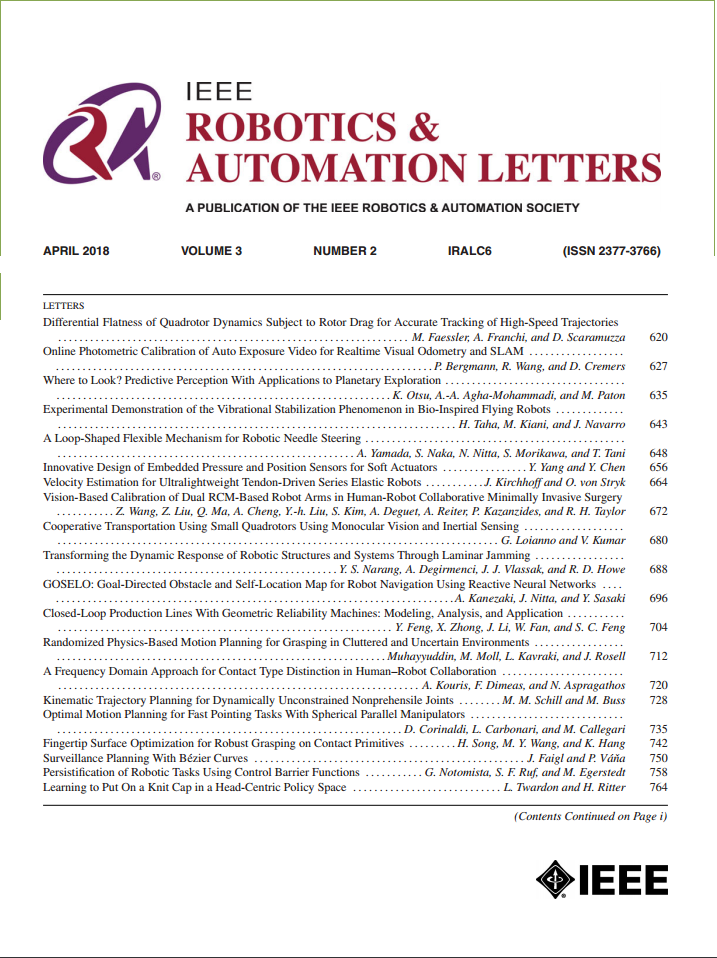LiCROcc:利用激光雷达和摄像头进行准确的语义占用预测的教学雷达
IF 5.3
2区 计算机科学
Q2 ROBOTICS
引用次数: 0
摘要
语义场景完成(SSC)是自动驾驶感知的关键,经常面临天气和光照变化的复杂性。长期战略包括融合多模态信息以增强系统的稳健性。雷达越来越多地用于3D目标检测,在自动驾驶应用中逐渐取代激光雷达,提供了一种强大的传感替代方案。在这封信中,我们重点关注了3D雷达在语义场景完成方面的潜力,开拓了跨模态优化技术,以提高对天气和光照变化的鲁棒性,并增强了SSC性能。在模型架构方面,我们提出了一种基于BEV的三阶段紧密融合方法,实现了点云和图像的融合框架。在此基础上,设计了cmrd、BRD和PDD三个跨模态蒸馏模块。我们的方法通过提取激光雷达和相机融合特征的丰富语义和结构信息,提高了雷达-纯雷达(R-LiCROcc)和雷达-相机(RC-LiCROcc)设置的性能。最后,我们的LC-Fusion、R-LiCROcc和RC-LiCROcc在nuscens - occupancy数据集上取得了最好的性能,mIOU分别比基线高出22.9%、44.1%和15.5%。本文章由计算机程序翻译,如有差异,请以英文原文为准。
LiCROcc: Teach Radar for Accurate Semantic Occupancy Prediction Using LiDAR and Camera
Semantic Scene Completion (SSC) is pivotal in autonomous driving perception, frequently confronted with the complexities of weather and illumination changes. The long-term strategy involves fusing multi-modal information to bolster the system's robustness. Radar, increasingly utilized for 3D target detection, is gradually replacing LiDAR in autonomous driving applications, offering a robust sensing alternative. In this letter, we focus on the potential of 3D radar in semantic scene completion, pioneering cross-modal refinement techniques for improved robustness against weather and illumination changes and enhancing SSC performance. Regarding model architecture, we propose a three-stage tight fusion approach on BEV to realize a fusion framework for point clouds and images. Based on this foundation, we designed three cross-modal distillation modules—CMRD, BRD, and PDD. Our approach enhances the performance in radar-only (R-LiCROcc) and radar-camera (RC-LiCROcc) settings by distilling to them the rich semantic and structural information of the fused features of LiDAR and camera. Finally, our LC-Fusion, R-LiCROcc and RC-LiCROcc achieve the best performance on the nuScenes-Occupancy dataset, with mIOU exceeding the baseline by 22.9%, 44.1%, and 15.5%, respectively.
求助全文
通过发布文献求助,成功后即可免费获取论文全文。
去求助
来源期刊

IEEE Robotics and Automation Letters
Computer Science-Computer Science Applications
CiteScore
9.60
自引率
15.40%
发文量
1428
期刊介绍:
The scope of this journal is to publish peer-reviewed articles that provide a timely and concise account of innovative research ideas and application results, reporting significant theoretical findings and application case studies in areas of robotics and automation.
 求助内容:
求助内容: 应助结果提醒方式:
应助结果提醒方式:


